
Photos Tell Tales of History and Mystery
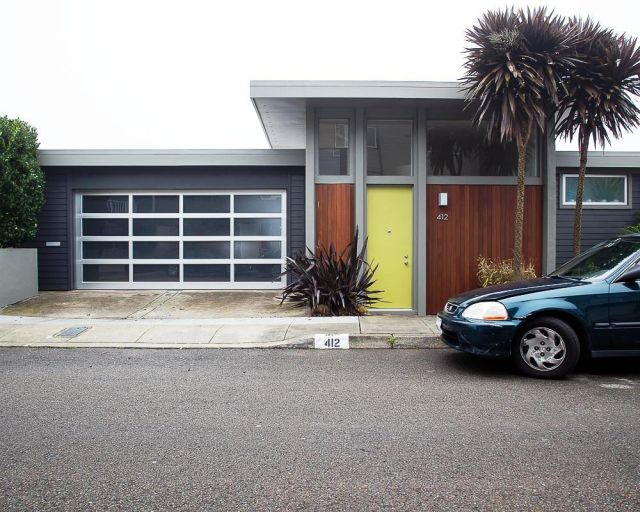 |
|
|
As a photographer, Colleen Mullins is a fine artist, not a documentarian. But her art engages with social issues as deeply, if more elliptically, as that of any muckraking photojournalist.
“Things interest me,” says Mullins, who grew up in a San Francisco Eichler cooperative home at Laguna Heights, and who returned to her childhood home four years ago. “When things interest me I dig in a little deeper.”
“I’m interested in telling a story always,” she says, “but not necessarily being completely literal in that story, [but] finding a way of scraping back the surface of something.”
Over the years, Mullins has delved into a wide variety of subjects over a wide geographic reach.
She cruised on high-end trips through the Panama Canal, the Caribbean, and Alaska (with her mom, who loved the cruises), where Mullins was appalled by much of what she saw. “I got kind of hooked on photographing this constant party,” Mullins says.
“The people on this cruise ship were captains of industry. People who had invented things, who had fortunes somehow, who had seats on the stock exchange,” she says.
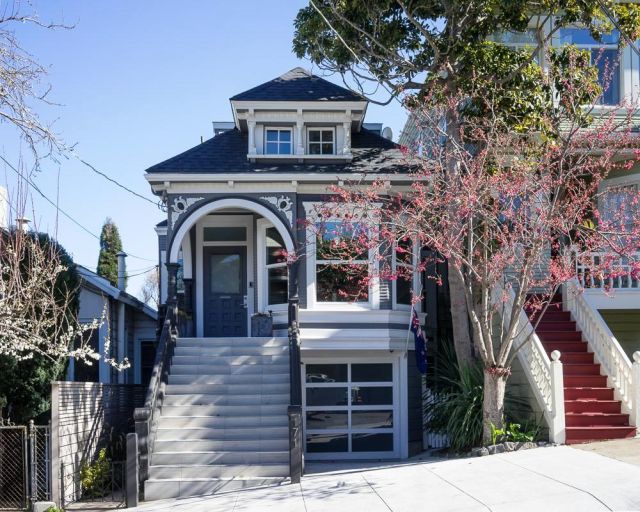 |
|
|
“They liked to be told ‘yes,’ and I saw some of the worst behavior I have ever seen in people. It was a sort of manufactured joy that was really interesting to me.”
For years she has been telling the tale of the diminutive Central Valley town of Gustine, whose population of fewer than 6,000 swells to up to 20,000 during its annual Portuguese Festa. (Mullins’ grandfather had been a prominent dairyman there.)
Mullins has also spent years photographing the sad, mutilated, often decapitated trees of New Orleans, destroyed not by Hurricane Katrina but by ill-considered treatment by power companies and others who arrived on scene long after the winds had died.
“The trees are so important to New Orleans. If you look at any picture [of the city], there is almost always a live oak,” she says.
“It became a different way to tell the story of Katrina,” she says of the project, called ‘Elysium.’
Her current project, ‘Exposition,’ focuses on the Northern California city of Arcata, as city leaders there prepare to remove a statue of President William McKinley – for reasons Mullins says are not entirely clear.
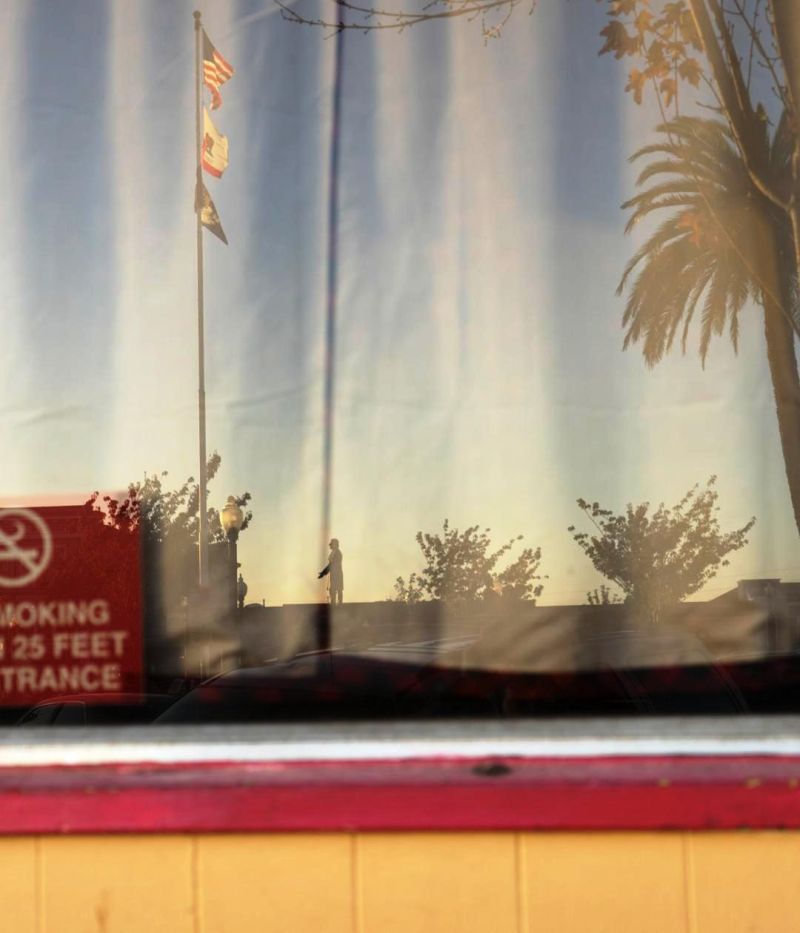 |
|
|
“There’s a lot of guilt and regret about [the city’s] relationship to local Native American tribes. McKinley has become to the town the symbol of that oppression. I would rather see them give the town plaza back to the native tribes,” she says.
‘Exposition’ may be “documentary in nature,” she says, but it is “not literal. I’ve got photographs of cheese I’ve burned the face of McKinley into. I have photographs of a guy’s thumb with white paint on it. There are things in there that are more poetic, constructed images. I would say I am a storyteller, and whatever ways I need to tell that story I will.”
Another project she’s working on is closer to home—perhaps for many of us. It came about not long after Mullins returned to her Eichler cooperative building after 22 years in Minnesota.
“‘The Bone of Her Nose’ documents a phenomenon I call the grayification of San Francisco,” she writes on her website. “Long opening its welcoming arms to people the world over, San Francisco was a place for the weird, the funky, purple haze, colorful music, and more colorful painted ladies. But its newest residents are almost universally painting it the color of that other notable San Francisco resident: Fog.”
Mullins noticed the phenomenon when pruning trees as a volunteer with Friends of the Urban Forest.
“We’d be pruning on a block and I would notice there would be four houses that were under renovation, and then there would be four other houses that were gray, that had san serif type on the front, and they had horizontal-slatted redwood garage doors or glass variants, and then a brightly colored door.”
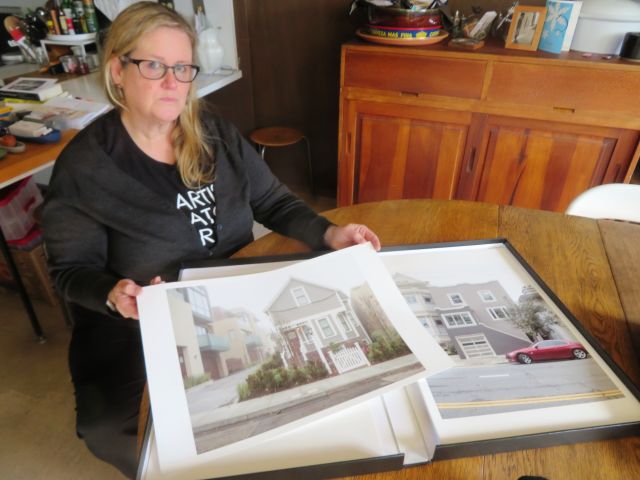 |
|
|
“They’re trying to turn the Victorians into mid-century modern homes.”
She’s using the color of paint to suggest the social changes the city is undergoing as prosperous high-tech workers displace those with less cash, thus unalterably changing the character of the city in which Mullins grew up.
Checking online realty sites, she discovered that almost invariably, the New Gray Ladies had recently been sold, or had been dandied-up by some realtor in preparation for sale.
“I would like to start a movement to make people think before they paint it gray,”
Mullins notes that in New Orleans, too, “vibrant color is part of the fabric of the place.”
“… and if somebody started putting up gray swatches on their houses, people would put letters on their door. ‘What are you doing? That's not how we do here.’ In a very polite way. They might bring you a piece of pie or something to come discuss it with you.”
“Maybe the line between these gray houses and [the McKinley series] is the mutability of history and what really happened. Who did it? It’s the same thing with the trees. There was a big storm here. But that’s not what happened to the trees.”
“There is an underbelly to every story. That’s what interests me. Something that is not just a straight-line story, but something that has tendrils that are more interesting than the thing itself.”
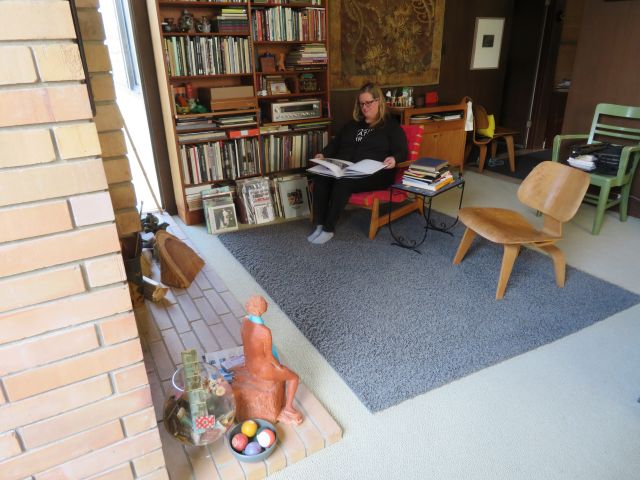 |
|
|
- ‹ previous
- 459 of 677
- next ›



